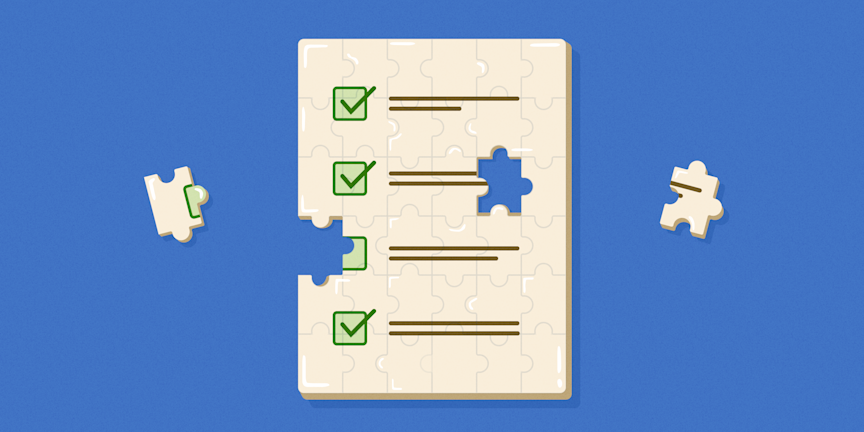How to Craft Retrospectives Action Plans


Action plans are one of the most important parts of Agile retrospectives, acting as the bridge between our insightful discussions and real, measurable improvements.
But watch out! Writing action items isn't just a checklist task; it's more like an art form that needs precision, clarity, and a bit of foresight.
Great action items help the team align, build a sense of ownership, and keep the momentum of continuous improvement going strong. On the flip side, poorly crafted action items can lead to team disengagement, underperformance, and that dreaded feeling of wasted time.
As someone who cares deeply about engagement, continuous improvement, and positive team dynamics, you’re probably looking to turn those ineffective action items into game-changers. If so, well, here is the right place for you!
In this article, we’ll dive into the art of crafting action plans, explore why they're so crucial in retrospectives, and share some tips on how to write them effectively.
Ready to get started? “Lights, Camera, ACTION!!” 🎥
Table of content
Why action items are essential in retrospectives
Retrospectives are a foundation of team dynamics and efficiency, serving as a dedicated time for teams to reflect on their work, discuss what went well, identify areas for improvement, and create actionable plans to enhance future performance.
The discussions held during retrospectives are valuable, but without effective action items, these discussions risk becoming mere talk.
Action items are the result of transforming insights into tangible improvements, driving continuous growth and fostering a culture of accountability and productivity within the team.
1/ Back to Basics: What is a great retrospective?
'A retrospective is a chance for a team to reflect and learn from the past within a structured meeting. The main aim is to inspect the situation and adapt to reality.'
- Aino Vonge Corry, Retrospectives Antipatterns
At Neatro, we believe a great retrospective provides a safe space for team members to openly share their thoughts and experiences from the last project, initiative, campaign, or sprint. It involves the entire team to ensure a comprehensive review from multiple perspectives.
The retrospective should be structured yet flexible, allowing for both organized feedback and spontaneous discussion. Its ultimate goal is to help the team continuously improve processes and collaboration.
💡Bonus: If you struggle to find the right approach for your next retrospective, we have a retrospective template library to help you plan your next session. And if you want even more, make sure to visit Neatroverse.
2/ So, what is the goal of action items in a retrospective?
Action items are all about turning those great discussions held in your retrospective into real improvements. The idea is to take the insights you’ve gathered and translate them into concrete steps that can actually be implemented. This way, the team can continuously improve how they work together.
Team members should address the root causes of any issues identified, propose solutions to enhance productivity and efficiency, and help the team achieve its goals more effectively.
By translating discussion points into actionable tasks, the team can ensure that each retrospective leads to measurable improvements.
3/ How to bridge the gap between discussion and action
As you may expect, one of the most common challenges in retrospectives is translating the discussion points and feedback into action.
Bridging the gap between discussion and action involves creating clear, achievable action items that directly address the points raised during the retrospective. This requires clear documentation, assigning ownership to each task, setting realistic deadlines, and following up on tasks to track progress.
Using tools that facilitate visibility and tracking of action items, like Neatro, can help keep the team focused and motivated to implement changes.
In the next section, we have listed five tips to help you understand these challenges and how to overcome them.
5 tips for writing effective retrospectives action items
Tip #1: Identify clear objectives and link action items with tangible goals
Define clear objectives
Objectives should be directly linked to the issues and opportunities identified during the retrospective. They help ensure that the team understands the purpose and expected outcomes.
For example, a clear objective could be “Increase the new user activation rate by 10% by the end of Q2.”
Once the objective is clear, it’s easier to focus the team on the right goals and prioritize the items that will contribute to achieving this objective.
Remind initial goals
Remind the team of the broader goals and ensure that the action items align with these goals. This alignment helps maintain focus and ensures that the action plan contributes to the team's overall objectives.
We highly recommend reminding the goals at the beginning of a retrospective. This practice reinforces the team's commitment to their objectives and sets a clear context for identifying and prioritizing tasks.
Stay focused on a few tasks
“Less is more.” We cannot agree more when it comes to action plans in retrospectives.
While it's usually common to address multiple challenges in a retrospective, adding too many actions can overwhelm the team and dilute their focus.
"Sometimes teams come up with long lists of candidate improvements, but too many initiatives can overwhelm your ability to change. Pick one or two experiments for the next iteration. Help your team choose items that they can commit to and that will have a positive effect."
- Derby, Larsen & Horowitz, Agile Retrospectives - Second Edition
In a nutshell, it's better to prioritize a few high-impact action items rather than creating an exhaustive list that the team cannot realistically tackle within a Sprint.
Tip #2: Use action-oriented language for your action items
One of the most common mistakes in writing action items is being vague or ambiguous.
For example, "Improve code quality" or "Communicate better" lack specificity and clarity, making it difficult for team members to know exactly what needs to be done.
Effective action plans should be specific and detailed, providing clear guidance on what actions are required.
Also, it is important to use action-oriented language, to make clear what needs to be done and who needs to do it.
Phrasing tasks with verbs like "implement," "create," "review," “increase,” or "design" provides clear instructions and reduces ambiguity.
This clarity helps team members understand their tasks and the steps required to complete them, ensuring that action items are both actionable and achievable.
Using precise, directive language fosters accountability and helps maintain momentum in driving continuous improvement.
Tip #3: Use the SMART framework to build relevant action items
SMART is an acronym for Specific, Measurable, Achievable, Relevant, and Time-bound. Using the SMART framework ensures that they are well-defined and achievable within a specified timeframe.
Specific: Tasks should be clear and specific.
Measurable: There should be a way to measure progress.
Achievable: The tasks should be realistic and attainable.
Relevant: It should align with the team's goals.
Time-bound: It should have a clear deadline.
To help you understand the impact it can have in framing your action items, there are concrete examples.
Instead of "Improve code quality," a SMART task would be "Implement code reviews for all new features within the next sprint."
Instead of "Communicate better," a SMART task would be "Conduct a daily 10-minute stand-up meeting to enhance team communication."
This framework is so important that we have written a complete and detailed article about SMART goals to help you master it easily.
Tip # 4: Assign ownership and define responsibilities
One of the most frequent mistakes is failing to assign ownership. Without a designated owner, tasks can easily fall through the cracks, and by the time this is noticed, it’s generally too late.
To avoid this, we recommend selecting an action item owner based on their expertise and role within the team. The owner should have the capacity and capability to drive the task to completion and be able to collaborate with peers and other colleagues.
To ensure accountability, regularly check in with the owners to track progress and address any challenges, and publicly acknowledge their responsibilities to reinforce their commitment.
Tip #5: Define deadlines everyone agrees on
Tasks without clear deadlines can linger indefinitely, losing their urgency and priority.
Setting realistic and specific deadlines helps ensure that action items are addressed promptly and within a manageable timeframe, contributing to continuous improvement.
Time-bound tasks create a sense of urgency and priority, helping the team focus on completing tasks within a specific period. However, it is crucial to set realistic and achievable deadlines to avoid frustration and burnout while maintaining motivation and productivity.
When setting deadlines, consider the team's workload and capacity, and remember that while you are running a sprint, maintaining team motivation, engagement, and productivity is like a marathon.
Additionally, establish a routine for following up on tasks, such as reviewing progress during each daily stand-up or at the beginning of the next retrospective, to ensure continuous progress and accountability.
Having check-in routines, which can be asynchronous too, is a healthy team practice. It not only controls whether things are aligned with the deadlines but also helps solve issues that might occur, provide support when needed, and reassess deliverables or expectations if necessary.
Know how to properly track retrospectives action items
1/ The facilitator’s role in tracking progress
The facilitator plays a crucial role in tracking progress. This includes ensuring psychological safety during a retrospective, documenting tasks during the retrospective, assigning ownership, setting deadlines, and organizing regular follow-ups.
Regular check-ins can include brief updates during daily stand-ups, weekly progress reviews, or dedicated sessions to address blockers.
These check-ins help keep action items on track and provide opportunities for the team to offer support and address challenges.
Keep in mind that these check-ins should remain short to ensure efficiency and focus.
2/ Using the right tools for tracking action items: Project management tools VS Retrospective tools
There are plenty of project management tools on the market that are primarily designed for managing sprints.
Tools like Jira, Asana and Trello are among the most widely used platforms for documenting and tracking tasks. The main benefit of these tools is their centralized approach to managing tasks, assigning ownership, setting deadlines, and monitoring progress.
However, these tools have their limitations when it comes to organizing retrospectives and effectively managing action items. This is where retrospective tools like Neatro come into play.
Retrospective tools like Neatro are specifically designed for conducting retrospectives in a structured manner, with the primary goal of helping you collect valuable feedback to create effective action items.
These tools enable teams to document action items during retrospectives, assign ownership, set deadlines, and track progress seamlessly, while ensuring your team stays engaged during the retrospective.
💡Curious to see Neatro in action? Watch a video demo of Neatro or book a live demo with our team! Choose whatever you prefer here.
3/ Integrating action items into team workflows
Using multiple tools and platforms to manage or optimize sprints and team collaboration is a real pain for most organizations.
The main reason is that many platforms do not communicate with each other, forcing you to duplicate work. Integration between your retrospective tool and other tools you use should be a no-brainer.
Seamless integration ensures that action items are incorporated into the team's existing workflows, maintaining their visibility and priority alongside regular tasks.
With Neatro, you can manage these action items directly within the platform or export them to your preferred tools in seconds.
Ensuring that action plans remain visible is also crucial, allowing all participants of the retrospective and others in the organization to access them easily and understand the context immediately.
Use visual aids like Kanban boards to keep action items visible to the entire team. Visibility ensures that they remain a focus and are regularly reviewed.
4/ Motivating team members to take ownership
Encourage team members to take ownership of action items by fostering a culture of accountability and recognition.
Celebrate successes and acknowledge the efforts of individuals who drive action plans to completion. This positive reinforcement motivates team members to take initiative and contribute to the team's continuous improvement efforts
Last but not least, regularly review action items during team meetings to track progress, address challenges, and celebrate completed tasks. Regular reviews help maintain momentum and ensure continuous improvement.
💡Bonus: running retrospectives can be challenging with multiple personalities to manage. Ownership should not be given to extroverts only. We have an article to help you collaborate with introverts in retrospectives.
Final thoughts on improving retrospectives action items
Writing effective action items for retrospectives is essential for transforming discussions into tangible improvements.
By following these best practices, teams can ensure that their retrospectives lead to continuous growth and success. Remember, the goal is to create a safe space for open discussion and to translate insights into actionable steps that drive the team forward.
With the right approach and tools, your retrospectives can become a powerful catalyst for continuous improvement and team engagement.
Before letting you go, we would like to show you how we, at Neatro, help hundreds of organizations around the world create better action plans with their teams.
Make yourself comfortable and take a look at Neatro’s retrospective experience. Run a demo with our bots right here (if you prefer, you can book a call with us!). And if you’re more of a solo adventurer, start using Neatro for free here.



